Odds are that you’ve met someone who claims that they have a hypoallergenic pet, perhaps even a calico cat.
Maybe you are even considering purchasing one, so you can finally snuggle your favorite feline friend without any discomfort.
Seems like a great option for the 30% of people who struggle with pet allergies, right?
Certain pet breeds, in this case, the calico cat, have been branded as “hypoallergenic,” meaning “fewer allergies”.
Unfortunately, there is no such thing as a hypoallergenic cat. However, the calico can produce fewer allergens than other breeds.
Although most people believe cat hair is responsible for allergies, the true culprit is the cat’s saliva and sebaceous glands.
So what is the deal with Calicos? Simply put, they are not hypoallergenic, but there are options within calico cats that could offer fewer allergy symptoms.
If you struggle with allergies around cats, don’t lose hope, there are still plenty of options for reducing your symptoms.
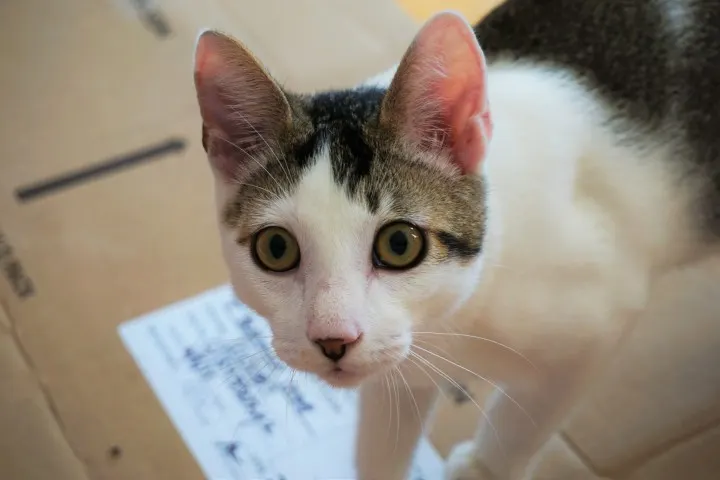
What Are Pet Allergens?
An allergen is any substance that causes an allergic reaction like a scratchy throat or watery eyes. In cats, this is the Fel D1 protein.
You can find this pesky little protein primarily in their saliva, but also in their sebaceous glands.
As your cat grooms, the protein is spread across its fur, where it dries as dander. These proteins are particularly small, and once the dander has been freed through brushing or petting, it can float for hours.
This is likely where the theory of pet hair causing allergies came from.
The sebaceous glands produce an oil (sebum) that coats the hair and skin of the cat. This leads to their distinctive scent and also contains the Fel d1 protein.
Why Do We React To The Fel d1 Protein?
People with overly sensitive immune systems have an increased risk of an allergic reaction. Certain allergens like pet dander, saliva, and sebaceous oils are seen as dangerous by the human body.
This results in the immune system attacking them, the same as a virus or bacteria.
History of Calicoes
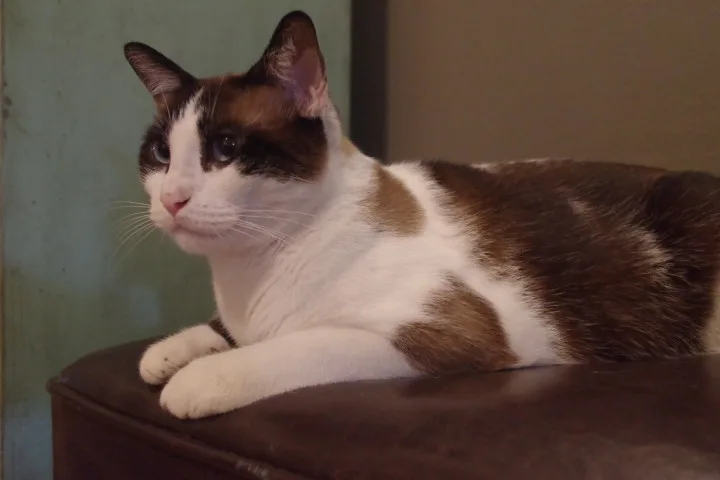 Around the world, calico cats are known as lucky charms because of their rarity. Contrary to popular belief, calico refers to the unique pattern of the coat, not the breed.
Around the world, calico cats are known as lucky charms because of their rarity. Contrary to popular belief, calico refers to the unique pattern of the coat, not the breed.
A few popular breeds that tout this coat pattern are Maine Coon, Manx, Persian, American Shorthair, and several others.
Genetics in calicoes are incredibly unique. Approximately 1 in every 3,000 calicoes born is male because of their “x-inactivation” gene.
In other words, because females have two x genes and males only have one, it makes a male calico nearly impossible.
In order for a calico to be born male, an extra x chromosome must occur — a condition called Klinefelter’s Disease.
Sadly, this disease causes numerous other health concerns, such as a shorter life span, brittle bones, joint pain, and diabetes. Thankfully there are lots of ways to make your kitty’s life more comfortable.
The good news is the majority of calicoes are born without major health concerns since most of them are female.
The typical lifespan for female calicoes is between 12 to 16 years which is on par for most adult cats. Temperament for calicoes varies from breed to breed, but they are known for being great pets.
Are Calico Cats Hypoallergenic?
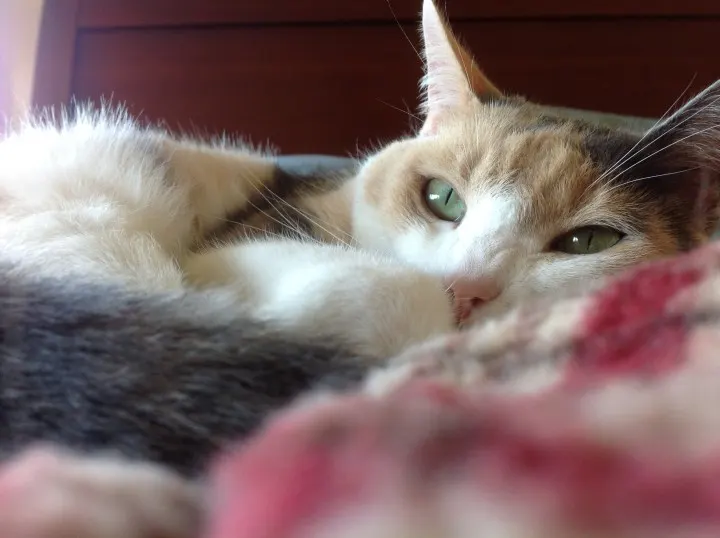 The question still remains: are calico cats hypoallergenic? In short, no.
The question still remains: are calico cats hypoallergenic? In short, no.
Firstly, as we know, no cat is hypoallergenic. Furthermore, not all breeds that have a calico pattern are suitable for people with allergies.
Several breeds, like the Maine Coon, are known as some of the worst for allergies due to their high shedding.
Though there could be benefits, it’s safe to say that a calico will not save you from your allergies.
Tips For Choosing A Pet If You’re Allergic
Although “hypoallergenic” has become a marketing buzzword, there are other things you should know about before buying a $2,000 cat.
- Female cats have fewer allergens than males — That’s right, girls rule, and boys drool. Choosing a female could help reduce allergies.
- Longer coats help keep dander in — This may seem counterintuitive, but longer hair may actually help keep the dander in.
- Light-colored cats may produce less protein — There may be a connection between light-colored cats and less protein production, although it is highly disputed. Some studies claim that darker-colored cats may produce up to four times as many allergens as their lighter-colored friends. Other sources claim that there is no connection.
- Breeds known to produce fewer allergens — The top breeds that offer the lowest risk for allergies are the Balinese, Siberian, Oriental Shorthair, and several others. Many of these breeds claim to have hypoallergenic qualities because of longer coats, shorter coats, and less grooming – you name it. All of these are loose and arguable claims, but overarchingly, these are the highest-rated breeds for decreasing allergies.
Ways To Decrease Allergens In The Home
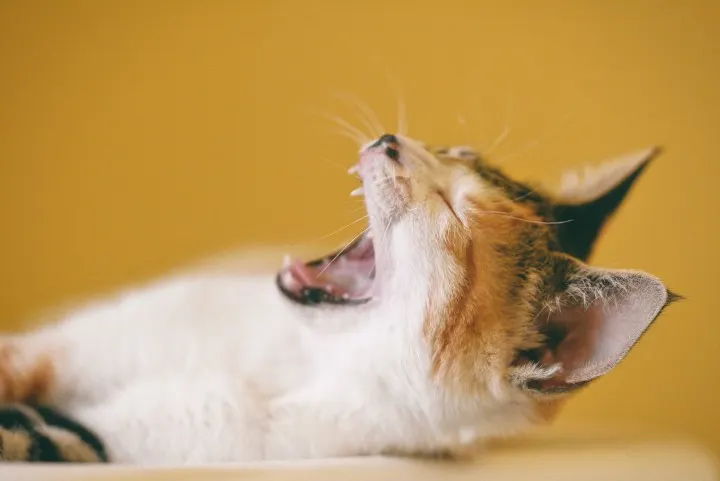 The good news is, there are options that could help decrease cat allergens in your home.
The good news is, there are options that could help decrease cat allergens in your home.
Bathing
Unfortunately, weekly baths won’t stop your runny nose, although they could potentially decrease allergens. Research shows that protein levels return to a cat’s coat a mere 24 hours after bathing.
Instead, try wiping your cat down with a microfiber cloth daily to remove visible dander to save you time.
Spay And Neuter
Studies have shown that male cats produce three to five times less protein after being neutered. Alternatively, having a female cat could decrease allergens even more.
Strict Diet
Certain foods have been developed claiming to “neutralize the protein.” Purina, for example, states that their hypoallergenic cat food could decrease proteins by 47% in as little as three weeks.
Retailing at $61.99 per 8 lb bag, this may not be the best budget-friendly option.
Air Filter
Cat allergens are very small and difficult to remove. Air filters can be an efficient option for removing them.
Keep Your Cat In One Area Of The Home
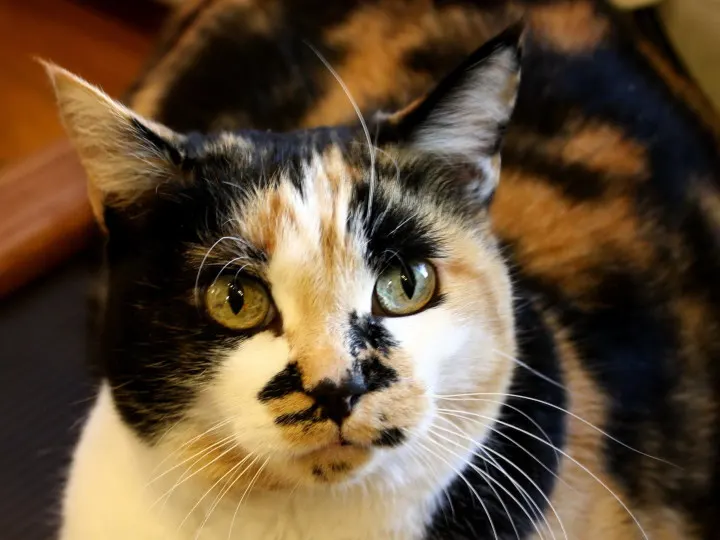
calico, cat, closeup
Keeping your kitties in one area of the home can decrease the number of allergens you come in contact with.
Unfortunately, there is no way to completely rid your home of all allergens, no matter how frequently you clean. However, keeping them at a reasonable level can drastically improve any symptoms.
Give It Time
Don’t lose hope yet — it’s important to note that levels of Fel d 1 fluctuate throughout your cat’s lifetime. Humans can even become desensitized to it over time.
Think – have you ever met someone who only has allergies to other pets but not their own?
Are Hypoallergenic Pets A Scam?
Back in 1953, the word hypoallergenic was coined by a cosmetic company in order to sell more products. The word simply means “fewer allergies.”
Since no two allergies are the same, this term remains unregulated and a savvy marketing tool.
Typically, a professionally bred, hypoallergenic cat can cost between $1,000 and $25,000+. There are less expensive options available, but you run the risk of false advertising and inbreeding.
Since anyone can use this term, it can lead to some ethical concerns, one of which is online pet scams.
Online Hypoallergenic Pet Scams
Online pet scams are prevalent, but this term can be especially sneaky.
We’ve all heard the stories: You see an ad for hypoallergenic kittens, and before you know it, you’re out $1,000.
Soon your eyes are watering, your throat is scratchy, and you’re stocking up on Kleenex. Now, little Bootsie is starting to look a lot like a Tabby instead of the Ocicat you thought you bought.
All of this to say, not all hypoallergenic claims are scams. If you are serious about purchasing a professionally bred cat, it’s imperative that you do your homework.
Confirm that the seller’s claims are true; this can save you a lot of time and heartache.
How To Avoid Pet Scams
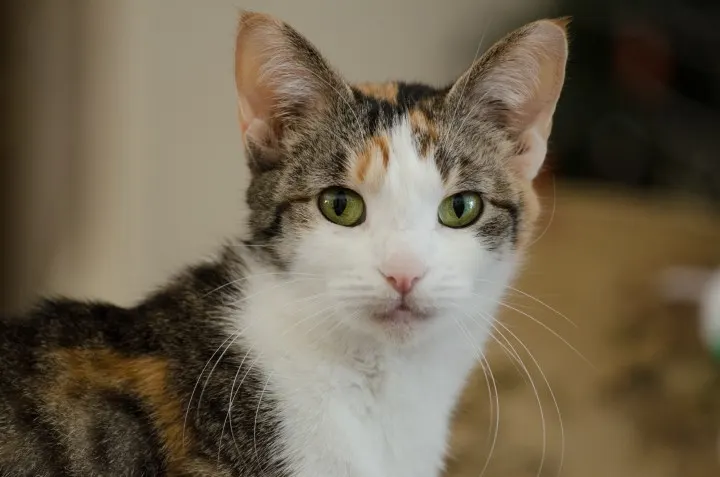 Finding a cat that reduces your allergies is possible, but falling victim to online pet scams can be discouraging. There are a few common warning signs to watch for in order for you to stay safe.
Finding a cat that reduces your allergies is possible, but falling victim to online pet scams can be discouraging. There are a few common warning signs to watch for in order for you to stay safe.
- Avoid any non-refundable deposits– Scammers will frequently rush buyers into a non-refundable deposit with the fear that the animal is in high demand.
- Check for added shipping fees– A common tactic for scammers is to operate a secondary “pet shipping company.” All planes have climate-controlled cargo areas, so offering “temperature-controlled” crates is an easy red flag to identify.
- Reverse image searches any ad photos– The easiest way to check for scams is to reverse image search ad photos. Scammers will often use photos from other breeders’ websites, so simply searching the photos can quickly confirm their authenticity.
Related Questions
What are the worst cat breeds for allergies?
The top breeds for the highest risk of reactions are Persian, Maine Coon, Norwegian Forest cat, Himalayan, Manx, and Cymric.
The reasoning behind these ratings generally has to do with the shedding rate. Though pet allergies don’t come from the actual hair, the dander that develops with them from grooming does.
Do hairless cats cause allergies?
It’s easy to assume that because a pet has no hair, the allergens would be less likely to spread to the air. Since the protein resides in the saliva, there are still allergens associated with them.
However, they are easier to control. Due to their hairlessness, bathing them is much easier, although not a one-stop solution to the dander.
Stacy is a lifelong animal lover who truly believes life just isn’t complete without pets. She’s had pets her whole life (including three dogs and a cat living under the same roof, somewhat harmoniously). She currently resides in NOLA with her husband, son, and two pups, Scooby “Dooby” Doo and Zoey. Stacy always makes a point to learn everything she can about her fur babies, and she has been writing about the pet-parent life for over two years.

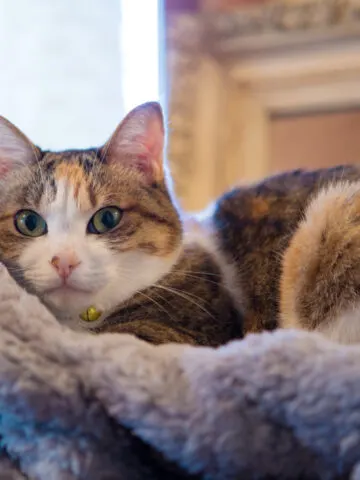

Leave a comment
You must be logged in to post a comment.